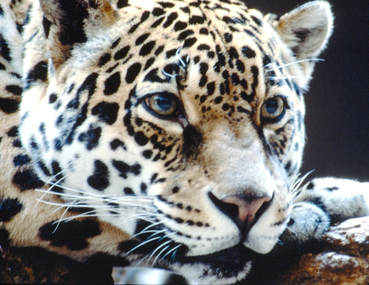Leopard

This style, is very unique. There are unique hand positions that are also linked to this style. Fighters are trained so that they can strike the body with the knuckles in such a way as to penetrate mass and leave a lasting impression. The style is great for "in fighting". Close quarter combat where the fighter quickly strikes the ribs, muscles of the arm, chest, neck and leg with precision and accuracy.
The hand techniques need to be understood before implementing. You can easily hurt yourself if you try fighting with leopards paw techniques and do not understand their proper use. They are not used like a boxing jab!
As is everything in Chi Lin, these strikes and blocks are circular in nature. Much like the tiger, the attitude of the leopard is important in being able to fight effectively with this style. Intense concentration on your movement and on your opponent is essential.
The stances in leopard are different from tiger. The leopard walks with the inside edge of its paw touching the ground first and then rolling toward the outside edge of its paw.
Training in leopard requires a lot of low stance training. The strikes and blocks are elliptical in their pathway through space towards the opponent. The wrist is also used in leopard for strikes and blocks. When blocking, often the very back of the wrist up to the forearm is used.
Some techniques in Chi Ling Pai are Leopards Paw Punch, Bent Leopards Paw Block and Uplifting Leopard.
Training on wooden posts is an importance aspect of this style. The posts are usually started only a few inches from the ground and eventually can be 4 feet tall or higher. They are also not all the same heights. The specific training and method needs to be guided by an experienced teacher, (Sifu), in order for the full benefits of balance and strength to be developed.
The hand techniques need to be understood before implementing. You can easily hurt yourself if you try fighting with leopards paw techniques and do not understand their proper use. They are not used like a boxing jab!
As is everything in Chi Lin, these strikes and blocks are circular in nature. Much like the tiger, the attitude of the leopard is important in being able to fight effectively with this style. Intense concentration on your movement and on your opponent is essential.
The stances in leopard are different from tiger. The leopard walks with the inside edge of its paw touching the ground first and then rolling toward the outside edge of its paw.
Training in leopard requires a lot of low stance training. The strikes and blocks are elliptical in their pathway through space towards the opponent. The wrist is also used in leopard for strikes and blocks. When blocking, often the very back of the wrist up to the forearm is used.
Some techniques in Chi Ling Pai are Leopards Paw Punch, Bent Leopards Paw Block and Uplifting Leopard.
Training on wooden posts is an importance aspect of this style. The posts are usually started only a few inches from the ground and eventually can be 4 feet tall or higher. They are also not all the same heights. The specific training and method needs to be guided by an experienced teacher, (Sifu), in order for the full benefits of balance and strength to be developed.